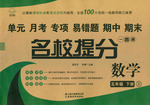题目内容
【题目】 You have probably heard that Japan has among the highest life expectancy(预期寿命) in the world and that the island of Okinawa(冲绳) has the greatest concentration(浓度) of centenarians(百岁老人). But do you know that two-thirds of the centenarians are still functioning independently? That means they are in their own homes, cooking their own meals and living their lives fully - at about 100 years old!

The elders there are less likely than their counterparts in the United States to have heart disease, dementia(痴呆) or certain cancers. Their bones are stronger than those of similarly aged people around the world. Many of these residents are the subjects of one of the largest studies of centenarians ever conducted. Since 1976, nearly a thousand centenarians on the islands have been studied.
More than anything, the Okinawa diet has long captured the headlines. Before knowing what the Okinawans eat, there is a valuable lesson in how they eat.
Remember this term: hara hachi bu. It is translated into English as “Stop eating when you are 80% full.” With hara hachi bu, the philosophy is that you should still be a little hungry when you push the plate away. You are also advised to reduce your portion(食物的分量) sizes, use smaller plates and eat more slowly.
There is a basic biological (生物学的) reason this works. It takes about 20 minutes for the stomach to send signals to the brain that it is full. Unfortunately, most people can shovel down another several hundred calories in that short time. Instead, if you push the plate away and just wait, you will have eaten less and still feel satisfied.
Eating less is associated with longevity, but of course, that also depends on what you eat. Okinawans typically eat seven different fruits and vegetables and 18 different foods a day, and more than 200 different foods and spices regularly in their overall diet.
However, the younger generations are eating more meat and fast food instead of fish and soy. The elderly there are still widely revered(崇敬), but there are fewer of them, and they are less often living to 100 than in decades past.
【1】What is the key to the high life expectancy in Okinawa?
A.What they eatB.How they eat
C.Where they liveD.When they exercise
【2】Which of the following has the closest meaning to the underlined part “shovel down” in Paragraph 5?
A.fill inB.put down
C.fill outD.push away
【3】Which of the following statements about Okinawa is true?
A.The elderly are in bad need of mutual respect.
B.There are an increasing number of the elderly.
C.The younger generations have a varied diet.
D.Things are starting to change for the worse.
【4】Which could be the best title for the passage?
A.Eat less to live longer.
B.Healthy diets build longevity.
C.The Okinawa: a place of longevity.
D.Improve life expectancy? Slow down.
【答案】
【1】B
【2】A
【3】D
【4】A
【解析】
本文是说明文。日本冲绳岛上的长寿老人密度最大。文章分析其中的原因是他们的饮食习惯:吃到八成饱就不再吃了,食物种类多样。
【1】
细节理解题。根据第三段中“ there is a valuable lesson in how they eat.(他们怎么吃给人们上了宝贵的一课)”可知,冲绳岛上的老人长寿比率高的关键是他们的饮食怎么吃。故选B 项。
【2】
词义猜测题。根据第五段中划线词前一句提到“胃需要大约20分钟才能向大脑发出饱腹的信号”;根据划线词后的部分“…another several hundred calories in that short time”,可以推断该句句意为“大多数人可以在这么短的时间内再吃进几百卡路里”。因此可以推测“shovel down”的意思与“fill in”相近;“shovel down”本意为“胡乱塞进”。故选A项。
【3】
细节理解题。根据文章最后一段中“The elderly there are still widely revered,but there are fewer of them, and they are less often living to 100 than in decades past.( 老人还是受到尊敬,但是老人比较少了。与过去几十年相比,他们活到100岁的几率降低了。)”可以推断,在冲绳岛上,老人的长寿情况没有以前那么好了,开始变糟。故选D项。
【4】
主旨大意题。文章分析了日本冲绳岛上的老人长寿的主要原因是他们的饮食习惯。文章第四段中提到“Stop eating when you are 80% full”当你80%饱的时候就停止进食;第六段中提到“Eating less is associated with longevity少吃多寿”,都是关于少吃和长寿的关系。因此文章的标题应为“少吃可以长寿”。故选A项。

 阳光考场单元测试卷系列答案
阳光考场单元测试卷系列答案 名校联盟冲刺卷系列答案
名校联盟冲刺卷系列答案 名校提分一卷通系列答案
名校提分一卷通系列答案 课程达标测试卷闯关100分系列答案
课程达标测试卷闯关100分系列答案



